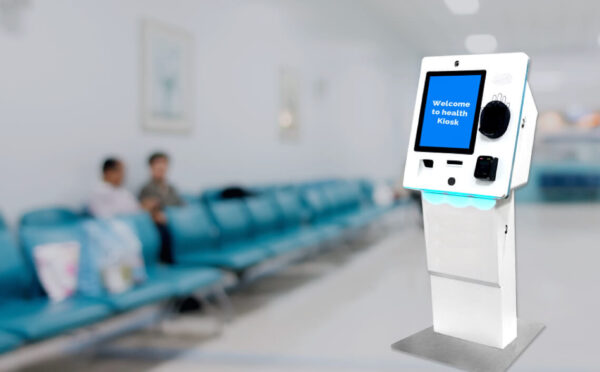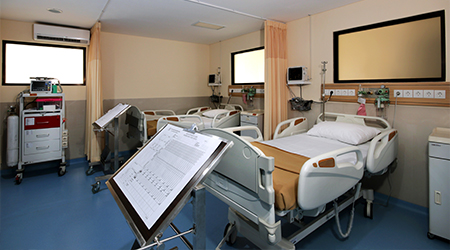Health
How To Create a Better Work-Life Balance

Work is an important part of everyone’s life and the right job can offer a lot of rewards. However, maintaining a healthy work-life balance is vital to your long-term personal and professional success.
When you work becomes too much of a central feature in your life, it can affect your physical health, emotional well-being, and social relationships. By balancing your work with other areas of your life, however, you can ensure that it becomes a positive element.
Balancing your responsibilities can be difficult but even the most demanding of careers can facilitate a happy home life too. To find out how you can create a better work-life balance in your own life, take a look at these top tips now:
1. Identify Your Goals
The vast majority of people need to work in order to achieve financial stability but, in reality, we’re compelled to work for other reasons too. Perhaps you want to have a positive impact on society? Maybe you want to push the boundaries and develop new tech breakthroughs? Or you may be compelled to promote equality and redress injustices via your career?
Whatever your motivations and aspirations, take time to identify your goals. A glittering career does require more sacrifices, so you’ll need to consider whether this is something you’re willing to commit to in the long term.
Instead of climbing the corporate ladder or aspiring to targets because other people seem to want this,consider your own aspirations and set goals that are meaningful to you. By doing so, you can ensure that your career is a source of joy and something that forms part of a contented life, rather than detracting from it.
2. Advance Your Career Online
Achieving the right qualifications and studying for professional certifications can be an essential way of starting or advancing your career. Understandably, it can take years to become qualified in some areas, such as medicine or law, which means you might be earning a low income while you’re studying or you need to live in a specific location to attend classes.
However, you don’t have to rely on traditional study options to help you achieve professional success. Now that online learning is widely accessible, you can advance your career from any location and with increased flexibility. Studying an accredited, accelerated online BSN online with Baylor University could kick-start your nursing career at a rapid pace, for example.
Similarly, completing a postgraduate course or certifications online can be a great way to expand your skillset and achieve professional success, without sacrificing too much of your free time. If you’re working full-time and studying, for example, you’ll need a flexible study option that facilities personalized learning, and online courses provide just that.
3. Build a Support Network
If you’re juggling professional and personal responsibilities, you’ll need a reliable support network to fall back on. For working parents, access to childcare is essential. Even if you’re able to fit your working hours around your child’s school schedule, there will be times when the two conflict. Having childcare arrangements in place will ensure that you’re not under constant pressure and will also give you peace of mind.
In many cases, people rely on a support network made up of family members and friends. A grandparent or aunt or uncle may be able to provide regular or emergency childcare when it’s required, for example.
However, accessing commercial services, such as a house cleaner or gardener, can also be a good way of creating a healthy work-life balance. When you have fewer chores to do at home, for example, you can ensure that you can use your free time to do the things you love and spend time with the people you care about.
4. Understand the Concept of Wellness
When you’re building your career or working in a demanding role, it’s easy to overlook self-care. Working parents may strive to fulfill their duties at work and at home, without making any time for relaxation, for example. In the long-term, however, neglecting your own needs can increase the risk of executive burnout and have a significant impact on your well-being.
The concept of wellness is multi-faceted and includes many different elements that affect your general well-being and happiness. From finances and work to social relationships and physical health, there are many areas that are relevant when you incorporate wellness into your life.
By making wellness a top priority, you’ll ensure that every one of these areas is represented in your life, which can enhance your well-being and help you to maintain a healthy work-life balance.
5. Find a Caring Employer
If your employer doesn’t acknowledge the importance of a work-life balance, then you’re probably looking for a new job already! As you might expect, employers who place too much pressure on their staff rarely provide a healthy or happy working environment.
By finding an employer who recognizes your holistic value and encourages you to embrace pursuits outside of work, you’ll find it far easier to maintain an appropriate work-life balance. Similarly, it’s these employers who are usually most willing to provide flexible working options or to go the extra mile to ensure their staff are supported at work.
Discovering Your Dream Career
Between the ages of 24 and 50, adults in the U.S. spend an average of 40.5 hours every week. When more than 2,100 hours a year are spent at work, it’s important to have a job you enjoy. Although it can take time to discover what your dream career really is, it’s well worth researching potential options in detail before you decide what role to go after.
When you genuinely enjoy your job, it becomes a positive aspect of your life, rather than something you ‘have’ to do it. Furthermore, the happiness you find in your dream career can have a constructive and beneficial impact on other areas of your life too.
While finding a career you love is undoubtedly important, it’s vital to remember the importance of other parts of your life too. By doing so, you can ensure that you enjoy a well-rounded life and a healthy work-life balance.
Education
SGOT Full Form – What is the SGOT Full Form?

SGOT full form : सेरम ग्लुटामेट ओक्सालोएस्ट्रांस्फेरेज”। यह एक प्रकार का एंजाइम है जो मुख्य रूप से लीवर और हृदय में पाया जाता है। यह टेस्ट शरीर के इस एंजाइम के स्तर को मापकर, व्यक्ति के लीवर और हृदय की स्वस्थता की जाँच करने के लिए किया जाता है।
डॉक्टर एक व्यक्ति को SGOT टेस्ट करवाने के लिए कह सकते हैं ताकि उन्हें इस एंजाइम के स्तर में किसी बदलाव की जानकारी हो सके, जो विभिन्न लीवर और हृदय रोगों के संकेतों को पहचानने में मदद कर सकता है।
इस लेख के माध्यम से हमने SGOT का पूरा नाम और इस टेस्ट के महत्वपूर्णता के बारे में जानकारी प्रदान की है, ताकि लोग इसे समझ सकें और अपने स्वास्थ्य की देखभाल में सहारा ले सकें।

SGOT का पुरा नाम – SGOT full form
SGOT की full form Serum Glutamic Oxaloacetic Transaminase होती है।
S – Serum
G – Glutamic
O – Oxaloacetic
T – Transaminase
SGOT की Pronunciation
Serum – सिरम
Glutamic – ग्लूटामिक
Oxaloacetic – ऑक्सालोएसेटिक
Transaminase – ट्रांसएमिनेस
SGOT क्या होता है ?
SGOT का मतलब सिरम ग्लूटामिक ऑक्सालोएसेटिक ट्रांसएमिनेस होता है। यह एक प्रकार का एंजाइम होता है जो सामान्य रूप से ह्रदय कोशिकाओं और यकृत में मौजूद होता है। जब ह्रदय या liver क्षतिग्रस्त हो जाता है तो ब्लड में SGOT का flow हो जाता है।
Blood मे serum glutamic oxaloacetic transaminase का level दिल के दौरे या वायरल hepatitis की वजह से बढ़ जाता है या फिर SGOT का स्तर कुछ दवाओं के कारण भी बढ़ सकता है।
SGOT test क्या है ?
SGOT test एक blood test होता है जो liver profile का हिस्सा होता है। यह लीवर में मौजूद दो एंजाइमों में से एक एंजाइम को मापता है और वह एंजाइम SGOT अर्थात Serum Glutamic Oxaloacetic Transaminase होता है।
इस एंजाइम को AST भी कहा जाता है। AST का अर्थ होता है अस्पार्टेट एमिनोट्रांसफरेज़। SGOT यह मूल्यांकन करता है कि ब्लड में कितना यकृत एंजाइम है।
SGOT test क्यों किया जाता है ?
डॉक्टर SGOT test के द्वारा मुख्य रूप से लीवर की समस्याओं की जांच और आंकलन करते हैं। SGOT Full Form एंजाइम का निर्माण मुख्य रूप से लिवर में होता है। जब भी किसी कारण से लीवर खराब हो जाता है या बीमार हो जाता है तो एसजीओटी लीवर से रक्त प्रवाह में leak हो सकता है। यदि ऐसा होता है तो रक्त में level सामान्य से ज्यादा हो जाएगा।
अगर किसी व्यक्ति को गुर्दे या दिल की बीमारी है तो उस व्यक्ति में SGOT का लेवल विशेष रूप से अधिक हो सकता है। इस chance को कम करने के लिए डॉक्टर उसी समय लिवर एंजाइम की जांच करवाने के लिए कह सकते हैं।
यदि दोनों एंजाइम का लेवल अधिक है तो यह जिगर की समस्या का संकेत हो सकता है। SGOT का स्तर अधिक होने का मतलब इस बात का संकेत भी हो सकता है कि शरीर के किसी अन्य प्रणाली या अंग में समस्या हो।
स्वस्थ SGOT test की range कितनी होती है ?
डॉक्टर निम्न range को सामान्य स्वस्थ SGOT रेंज के रूप में स्वीकार करते हैं :-
पुरुष : – 10 से 40 unit प्रति लीटर
महिलाएं :- 9 से 32 यूनिट प्रति लीटर
SGOT test की आवश्यकता क्यों है ?
ब्लड में इस एंजाइम के level की जांच करने के लिए यह test किया जाता है। इस जांच के द्वारा डॉक्टर को ह्रदय, यकृत, गुर्दे, मांसपेशी आदि की क्षति का निदान करने में मदद मिलती है। आमतौर पर तब यह टेस्ट किया जाता है, जब किसी व्यक्ति में जिगर की क्षति के symptoms होते हैं और यह symptoms निम्न है :-
- सुजा हुआ पेट
- पीली त्वचा और आंखें
- गहरे रंग का मूत्र
- भूख में कमी
- पैरों और टखनों में सूजन
- हल्के रंग का पूप
इसके अलावा डॉक्टर के द्वारा SGOT test तब भी सुझाया जाता है, जब :-
- व्यक्ति को हेपेटाइटिस वायरस का संक्रमण हो।
- यदि कोई ऐसी दवा ले रहे हो जो लीवर पर नकारात्मक प्रभाव डाल रही हो।
- बहुत अधिक शराब का सेवन करते हो।
- जिगर की बीमारियों का कोई पारिवारिक इतिहास हो।
- मोटापा या मधुमेह हो।
- बरामदगी, अग्नाशयशोथ या फिर मांसपेशियों में चोट आदि लगी हो तो ऐसे में डॉक्टर व्यक्ति को एसजीओटी टेस्ट करवाने के लिए कहते हैं।
SGOT test की तैयारी कैसे करे ?
SGOT Full Form टेस्ट एक सामान्य ब्लड टेस्ट है जो तकनीकी रूप से बिना किसी विशेष तैयारी के किया जा सकता है। हालांकि, कुछ कदम हैं जो आप इस टेस्ट को सरल बनाने के लिए उठा सकते हैं, जैसे कि टेस्ट से दो दिन पहले टाइलेनॉल और अन्य कोउंटर दवाओं से बचें।
यदि किसी कारण से ओवर-द-काउंटर दवा की आवश्यकता होती है, तो आपको टेस्ट से पहले डॉक्टर को सूचित करना चाहिए। टेस्ट से पहले, आपको डॉक्टर को उन सभी दवाओं के बारे में सूचित करना अत्यंत महत्वपूर्ण है जो आप ले रहे हैं।
टेस्ट से एक रात पहले, अच्छी तरह से पानी पीना सुनिश्चित करें ताकि आप हाइड्रेट रहें। यह सुनिश्चित करने में मदद करेगा कि आपके रक्त को खींचना आसान हो।
ध्यान रखें कि आपके पहने हुए कपड़े बहुत टाइट नहीं हों, क्योंकि रक्त का सैंपल आपके बाजू से लिया जाता है। इसलिए, आधी कोहनी तक के कपड़े पहनना अधिक सुरक्षित हो सकता है, जिससे टेक्नीशियन को रक्त प्राप्त करना आसान हो।
निष्कर्ष :-
मित्रों, इस लेख में हमने SGOT Full Form का पूरा नाम विस्तार से जानने का प्रयास किया है। urstoryiq.com हम आशा करते हैं कि यह लेख आपके लिए सहायक साबित होगा। यदि इस लेख से संबंधित कोई भी प्रश्न हो, तो कृपया हमें टिप्पणी के माध्यम से बताएं।
यदि आप किसी अन्य विषय पर जानकारी चाहते हैं, तो आप वह भी हमसे कमेंट करके साझा कर सकते हैं। अगर आपको जानकारी पसंद आई हो, तो कृपया इस लेख को अधिक से अधिक साझा करें।
FAQ’S :-
Q1. SGOT test मे sample type क्या रहता है ?
Ans. इसमें blood sample लिया जाता है।
Q2. SGOT test से पहले खाली पेट रहना आवश्यक है ?
Ans. नही
Q3. SGOT test report क्या दर्शाती है ?
Ans. यह liver कोशिकाओं को नुकसान की मात्रा का संकेत देती है।
Q4. क्या SGOT 70 समान्य है ?
Ans. नही, समान्य SGOT 7 - 56 unit प्रति लीटर होता है।
Q5. SGOT के लिए blood sample कैसे लिया जाता है ?
Ans. हाथ की नस से Check Out : CR Full Form – What is CR Full Form
Health
ICU Full Form: Intensive Care Unit
Health
Why is it important to install health kiosks?

Installing health kiosks has become increasingly important in recent years because of the many advantages they provide to patients and healthcare providers alike. This health atm kiosk is important to expand access to healthcare, promote preventative care, and enable people to manage their health. In this post, we are going to tell you about health kiosks and their advantageous effects on the provision of healthcare.
- Enhance accessibility
Accessibility is improved for individuals by placing health kiosks in a variety of public locations, including pharmacies, shopping malls, workplaces, and hospitals. Health ATM eliminate location barriers and guarantees that people may quickly obtain basic healthcare services wherever they are by providing easily accessible points of care.
- Convenience and effectiveness
Health kiosks provide a quick and effective way to get medical care. They give people the freedom to monitor their vital signs, perform quick health evaluations, and get rapid feedback whenever it’s convenient for them. Because health kiosks are self-service, there is no need to make appointments, stand in line, or spend huge amounts of money.
- Early Detection and Preventive Care
For better health outcomes, early Detection and Preventive Care are essential. Individuals can regularly measure health indicators and monitor their vital signs thanks to the health atm kiosk. People can see potential health hazards or variations from normal limits by routinely evaluating variables like blood pressure, heart rate, weight, or BMI.
Early detection enables people to consult healthcare professionals, seek medical care, adjust their lifestyles as needed, or both. In this way, it encourages preventative care and lowers the risk of more significant health consequences.
- Empowers the patients toward their health
The use of health kiosks as a platform for health education and empowerment promotes both. They offer access to tools, videos, and interactive content on numerous health-related topics.
Health atm kiosks enable people to make informed decisions about their health, adopt healthier habits, and actively participate in maintaining their well-being through encouraging health literacy. This sharing of information encourages a sense of personal ownership and accountability for one’s health.
- Healthcare Delivery at a Reduced Cost
Setting up health kiosks can help with healthcare delivery at a reduced cost. Health kiosks relieve pressure on conventional healthcare institutions by offering self-service healthcare options, freeing up resources for more specialized care.
Additionally, health atm kiosks can aid in the early detection of health problems and reduce the chance of illness that leads to critical treatments for patients. Health kiosks are a valuable addition to healthcare systems because of how reasonably priced they are, especially when it comes to lowering overall healthcare costs and optimizing resources.
Conclusion
Setting up health kiosks is crucial for expanding access to healthcare, promoting preventative care, and enabling people to take an active role in maintaining their health. These self-service tools facilitate early identification and preventive interventions while improving accessibility, convenience, and time effectiveness.
Additionally, health kiosks help with patient-centered treatment, cost-effective healthcare delivery, and health education.
-
Technology6 years ago
Developing Workplace Face Recognition Devices and Controls
-

 Business News5 years ago
Business News5 years agoFacts to know about commercial closing
-
Home Advice6 years ago
Things to Remember When Shopping For Recycled Plastic Adirondack Chairs
-
Technology6 years ago
Use WhatsApp Web Login on PC
-
Entertainment6 years ago
Meanings of WhatsApp Symbols, Emoticons
-

 Education5 years ago
Education5 years agoHuman Body And Its Interesting Features
-
Entertainment6 years ago
Ganesh Chaturthi Songs (Mp3, DJ Songs, Remix) Ganpati Songs Free Download
-

 Sports News4 years ago
Sports News4 years agoHow to Build a Perfect Fantasy Cricket Team?









